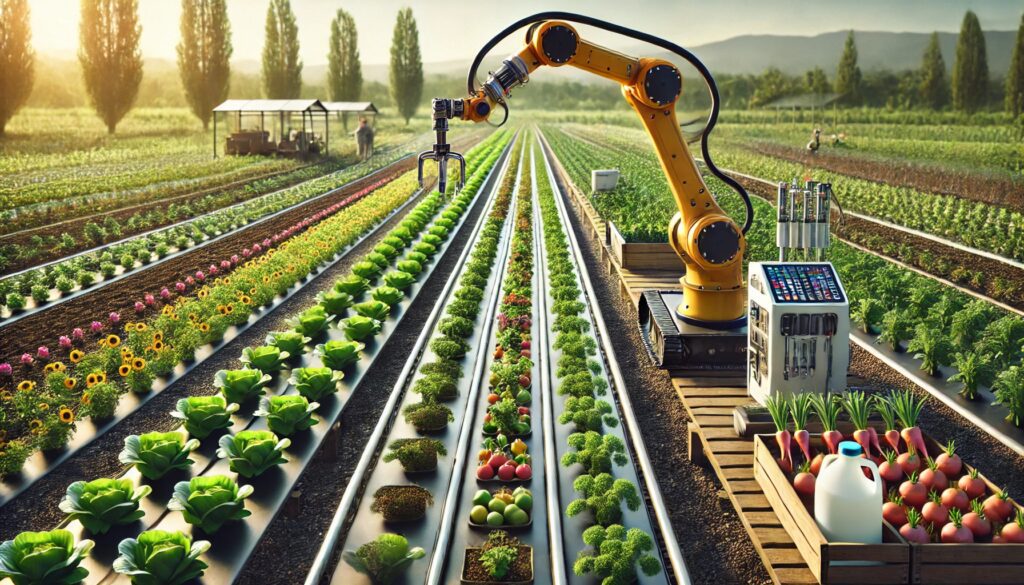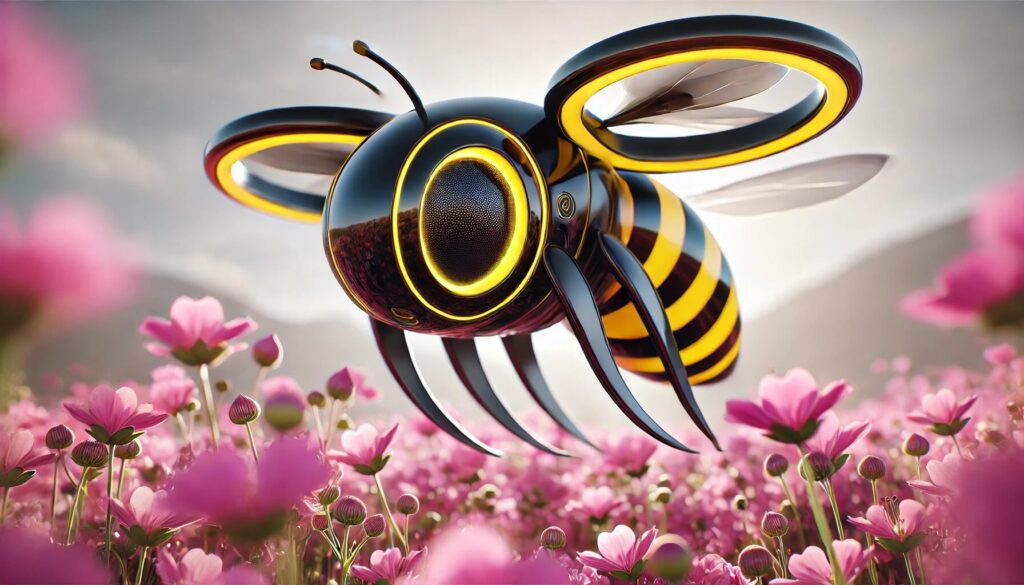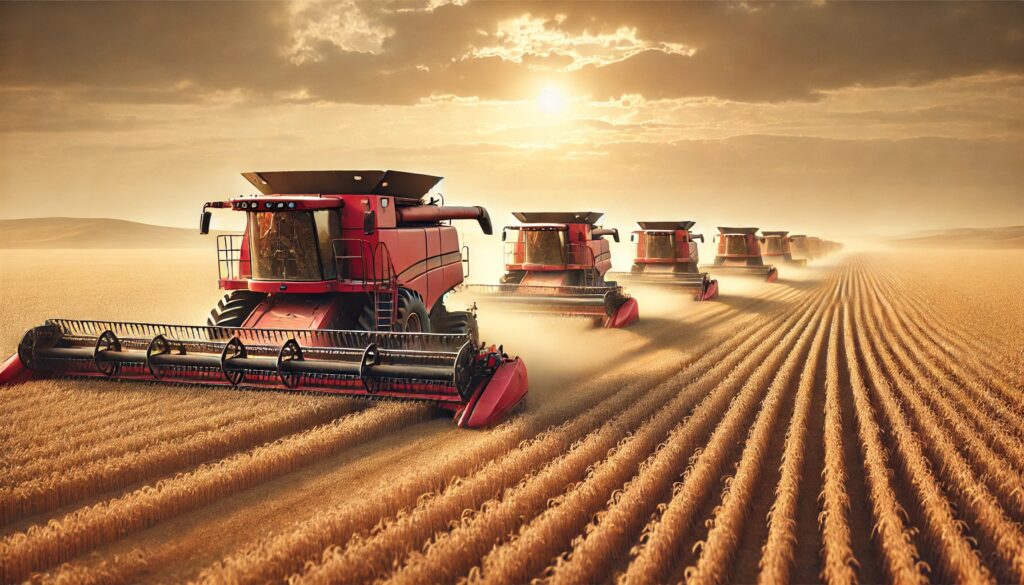
The global population grows and the demand for food production rises. Pest management has become crucial in protecting crops and maintaining food supplies.
Traditional pest control methods often rely on reactive approaches, tackling infestations only after they’ve caused damage. However, with the rise of AI-powered pest management platforms, proactive prevention and early detection are now possible. In this article, we’ll dive into how these platforms work, why they’re changing the agricultural landscape, and what their future impact might be.
The Rise of AI in Pest Management
Agriculture has long been one of the most innovative industries, but pest control has struggled with outdated practices. AI technologies are now transforming this space by introducing precision and predictive capabilities that go far beyond traditional methods.
Why Traditional Pest Control Falls Short
Conventional pest management often relies on pesticides or other chemical treatments after a problem has already emerged. This reactive approach can lead to crop loss, environmental harm, and increased pest resistance. AI platforms aim to prevent outbreaks before they start by identifying potential infestations early, reducing the need for harsh chemicals.
The Power of Prediction
AI-powered pest management tools use predictive algorithms to analyze weather patterns, crop conditions, and historical pest data. By identifying risk factors ahead of time, these platforms can alert farmers to potential infestations before they become an issue, empowering them to act quickly.
Benefits of AI-Driven Pest Management

From reducing chemical use to preventing crop loss, AI-powered pest management platforms offer multiple benefits that are revolutionizing agriculture.
Sustainable Farming and Reduced Chemical Use
One of the standout benefits of AI in pest control is the reduction of pesticide dependency. By detecting infestations early, farmers can implement targeted treatments, avoiding widespread chemical application and promoting sustainable farming practices.
Enhanced Crop Yields and Food Security
Preventing pest outbreaks translates to fewer crop losses, which directly contributes to higher yields and increased food security. With early warnings and preventive action, farmers can protect their crops, ensuring a reliable food supply.
Cost Savings for Farmers
AI platforms help farmers cut costs by allowing them to apply pesticides and other treatments only where necessary. By catching infestations before they spread, farmers can avoid the high costs associated with extensive crop loss and reactive pest control.
Examples of Leading AI Pest Management Platforms
Several AI-powered pest management solutions are making waves in agriculture, providing farmers with innovative tools to combat pest outbreaks.
Taranis
Taranis leverages AI and high-resolution imagery to monitor fields for early signs of pest infestations. Their platform uses drones and machine learning to detect pests on a micro level, helping farmers make data-driven decisions on when and where to intervene.
FarmSense
FarmSense combines AI with sensor-based technology to track pest populations in real time. This tool monitors pest behavior, offering farmers a highly accurate look at pest activity and population trends to prevent infestations before they reach critical levels.
Xarvio
Xarvio offers a digital farming platform that integrates AI for pest prediction, using historical and real-time data to forecast pest risks. The tool provides users with easy-to-follow recommendations, making it simple for farmers to take preventive actions against pests.
Challenges and Considerations for AI Pest Management

While AI in pest management offers incredible advantages, there are still challenges that may slow its adoption in the agricultural sector.
Data Privacy and Security
With large volumes of data collected from farms, ensuring data privacy and protection is essential. Farmers may have concerns about who has access to their data and how it will be used, creating a need for transparent policies from AI platform providers.
High Initial Costs
AI-powered pest management systems can be expensive to implement, especially for small-scale farmers. While the long-term savings are substantial, the upfront costs may be a barrier for some farmers, particularly those in developing regions.
Technical Expertise and Accessibility
Not all farmers have experience with AI-based technology, which may limit their ability to adopt and benefit from these platforms. Training programs and accessible interfaces are key to ensuring farmers can make the most of AI tools in pest management.
The Future of AI in Pest Management
The role of AI in pest control will continue to grow as technology advances and more farmers embrace data-driven solutions. With further developments, AI-powered pest management platforms are likely to become even more accessible, affordable, and effective.
Innovations on the Horizon
Emerging technologies, such as IoT sensors and more refined machine learning algorithms, will likely enhance AI’s precision in pest management. These tools will allow for real-time pest detection, making it possible to catch infestations at the earliest stages and apply highly specific treatments.
A Sustainable Future for Agriculture
As AI in pest management continues to evolve, it will support a more sustainable agricultural future by reducing chemical use, enhancing crop yields, and promoting environmental health. These platforms hold the potential to help farmers worldwide produce food more efficiently and sustainably, contributing to the global food supply.
Further Reading and Resources
- How Artificial Intelligence is Transforming Agriculture
- Precision Agriculture and Sustainable Pest Control
- Taranis: AI-Powered Pest Detection Platform
AI-powered pest management is shaping the future of farming, offering innovative solutions that protect crops and promote sustainability. By embracing these platforms, farmers can prevent pest outbreaks, reduce chemical use, and ensure a more secure food supply for future generations.
FAQs
What is an AI-powered pest management platform?
An AI-powered pest management platform is a tool that uses artificial intelligence, machine learning, and data from various sources to predict, detect, and manage pest infestations in agriculture. These platforms help farmers take preventive action to protect crops by identifying signs of pest activity early, often before a visible outbreak occurs.
How do these platforms detect pests before they cause damage?
AI platforms use predictive algorithms to analyze factors like weather patterns, crop conditions, and historical pest data. By identifying conditions that increase the risk of pest infestations, the platform can alert farmers in advance, allowing them to take targeted measures to prevent an outbreak.
Are AI pest management tools cost-effective for small farmers?
While initial costs can be high, AI pest management tools often reduce long-term costs by minimizing crop loss and reducing the need for widespread pesticide use. Some platforms offer scaled options or subsidies to support small farmers, making it more affordable for diverse agricultural operations.
Can AI pest management help reduce chemical pesticide use?
Yes, one of the major benefits of AI-driven pest management is the reduction in pesticide dependency. By targeting treatments only where pests are detected or predicted, farmers can reduce widespread pesticide application, promoting sustainable and eco-friendly farming practices.
What are some leading AI pest management platforms available?
Some well-known platforms include Taranis, which uses high-resolution imagery and machine learning for micro-level pest detection; FarmSense, which offers sensor-based real-time monitoring; and Xarvio, which provides pest risk forecasting using historical and real-time data analysis. Each platform brings unique strengths to pest detection and management.
How does AI in pest management contribute to sustainable farming?
AI-powered pest management promotes sustainable farming by reducing the need for broad-spectrum pesticides, which can harm beneficial insects, soil health, and local ecosystems. By detecting pests early, these platforms enable precise treatments, lowering the environmental impact of pest control and supporting long-term soil and plant health.
What type of data do AI platforms use for pest prediction?
AI pest management systems gather data from a variety of sources, including satellite imagery, drones, weather stations, soil sensors, and historical pest records. This multi-source data allows AI algorithms to make highly accurate predictions by analyzing factors like temperature, humidity, crop health, and pest behavior patterns.
Is AI-powered pest management accessible to farmers without tech expertise?
Many AI pest management tools are designed to be user-friendly and intuitive. Platforms often include simple interfaces and provide actionable insights, so even farmers with limited technical expertise can benefit. Additionally, some providers offer training and support to help farmers get comfortable with using the technology.
What are the main challenges to adopting AI pest management in agriculture?
Key challenges include high initial setup costs, concerns over data privacy, and the need for technical training. While long-term cost savings are substantial, upfront expenses may be a barrier, especially for small-scale farmers. Ensuring data security and providing training resources can help address these concerns, making adoption easier across diverse farming communities.
How is AI-driven pest management expected to evolve in the future?
The future of AI pest management includes even more precise tools, potentially integrating IoT devices for real-time data collection and more advanced machine learning models. As these technologies improve, platforms will be able to detect pest threats even earlier and offer increasingly specific recommendations, creating a more sustainable and resilient agricultural landscape.
Do AI pest management platforms work for all types of crops?
Yes, many AI pest management platforms are designed to be versatile and can be used across various types of crops, including grains, vegetables, fruits, and more. Platforms often adjust their predictive algorithms to accommodate specific crop needs and pest behaviors, making them effective across a wide range of agricultural systems.
How accurate are AI pest management predictions?
AI pest management platforms are highly accurate, though results can vary based on data quality and environmental factors. By leveraging large datasets and advanced machine learning models, these systems achieve high accuracy in detecting early indicators of pest outbreaks. However, as with any predictive tool, unexpected variables (like extreme weather events) can affect outcomes.
Can AI pest management tools be integrated with other farm management systems?
Yes, many AI-powered pest management tools are designed to integrate seamlessly with other farm management systems. This integration allows farmers to combine pest management data with information on soil health, irrigation, and crop growth. By centralizing data, farmers gain a comprehensive view of their farm operations, enhancing decision-making across the board.
Do AI pest management platforms require internet connectivity?
Some AI pest management platforms operate entirely online, requiring internet connectivity for real-time data processing and updates. However, certain platforms offer offline features or local data processing to accommodate farmers in remote areas with limited internet access. These offline capabilities ensure that farmers can still receive valuable insights even without constant connectivity.
Are there any privacy concerns with data used in AI pest management?
Data privacy is a common concern, as platforms collect sensitive information about farm operations and conditions. Most reputable AI pest management providers use secure data encryption and have strict privacy policies to protect farmers’ data. Farmers are encouraged to review these policies and select platforms that prioritize data security and transparency.
How quickly can AI pest management systems detect and respond to pest threats?
AI pest management systems can detect early signs of pest threats within hours to days, depending on the platform’s technology and data input frequency. Real-time sensors and satellite imagery enable almost immediate alerts, allowing farmers to respond rapidly and prevent pests from spreading across crops.
Are there specific pests that AI platforms are particularly good at detecting?
Yes, many AI platforms are optimized to detect common agricultural pests, such as aphids, caterpillars, beetles, and locusts, which are known to cause significant crop damage. Machine learning algorithms can be trained to recognize these pests’ behavior, patterns, and environmental conditions, making detection of high-risk species particularly effective. Customizable platforms may allow farmers to adjust settings for region-specific pests as well.
What role do drones play in AI-driven pest management?
Drones are a crucial component of AI pest management, as they allow for high-resolution aerial imagery and close-up monitoring of crop fields. Equipped with sensors and cameras, drones capture detailed images of crops, enabling AI algorithms to detect subtle signs of pest damage, such as leaf discoloration or holes. This aerial perspective helps cover large fields efficiently, providing a more comprehensive view than ground inspections.
Do AI pest management systems help in predicting future pest outbreaks?
Yes, many AI platforms analyze long-term weather patterns, pest migration routes, and seasonal trends to predict future outbreaks. By identifying factors that led to previous infestations, these systems can provide forecasts for high-risk times and areas, helping farmers plan preventive measures ahead of each growing season.
How can farmers get started with an AI-powered pest management platform?
Farmers interested in AI-powered pest management can start by researching platforms suited to their crops, location, and pest risks. Many providers offer demos, consultations, or free trials to help farmers assess the tool’s effectiveness before making a full commitment. Some governments and agricultural organizations also offer resources and support for farmers looking to adopt advanced pest management technologies.




